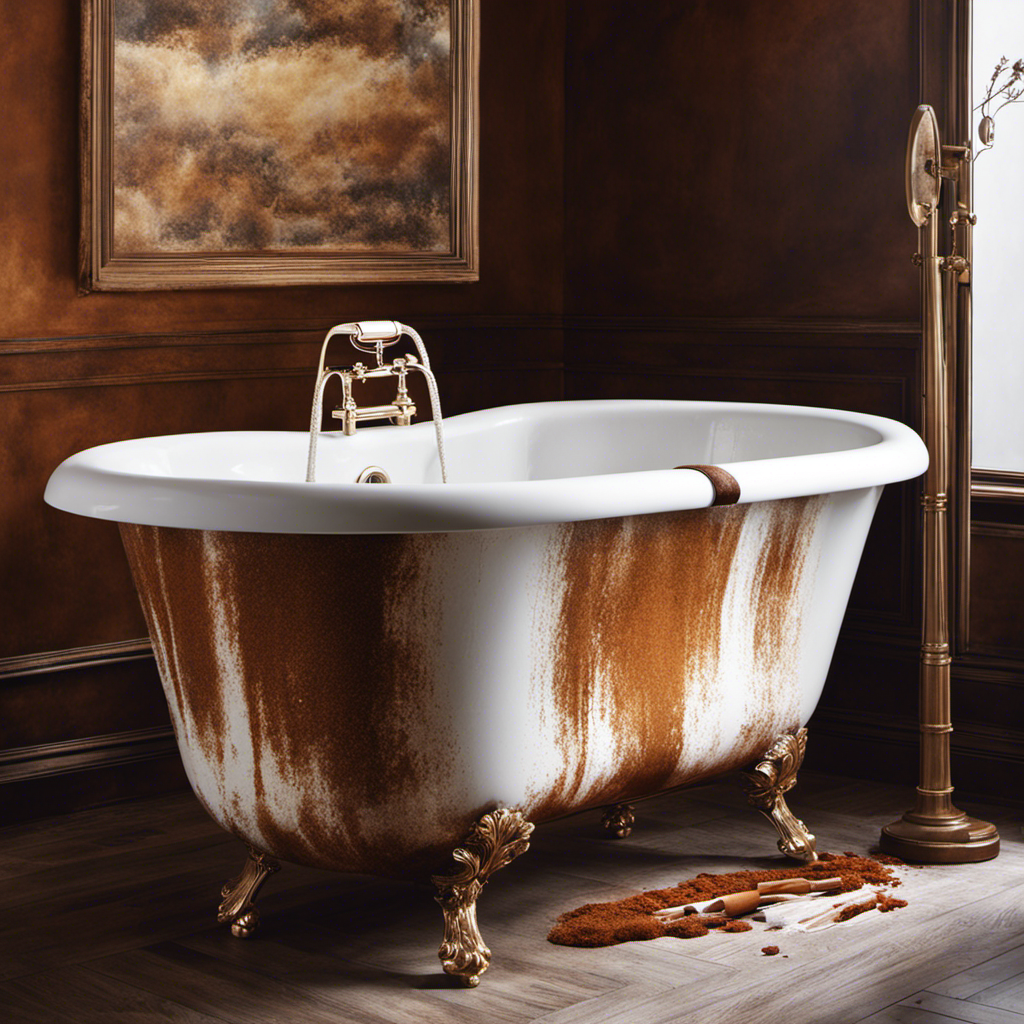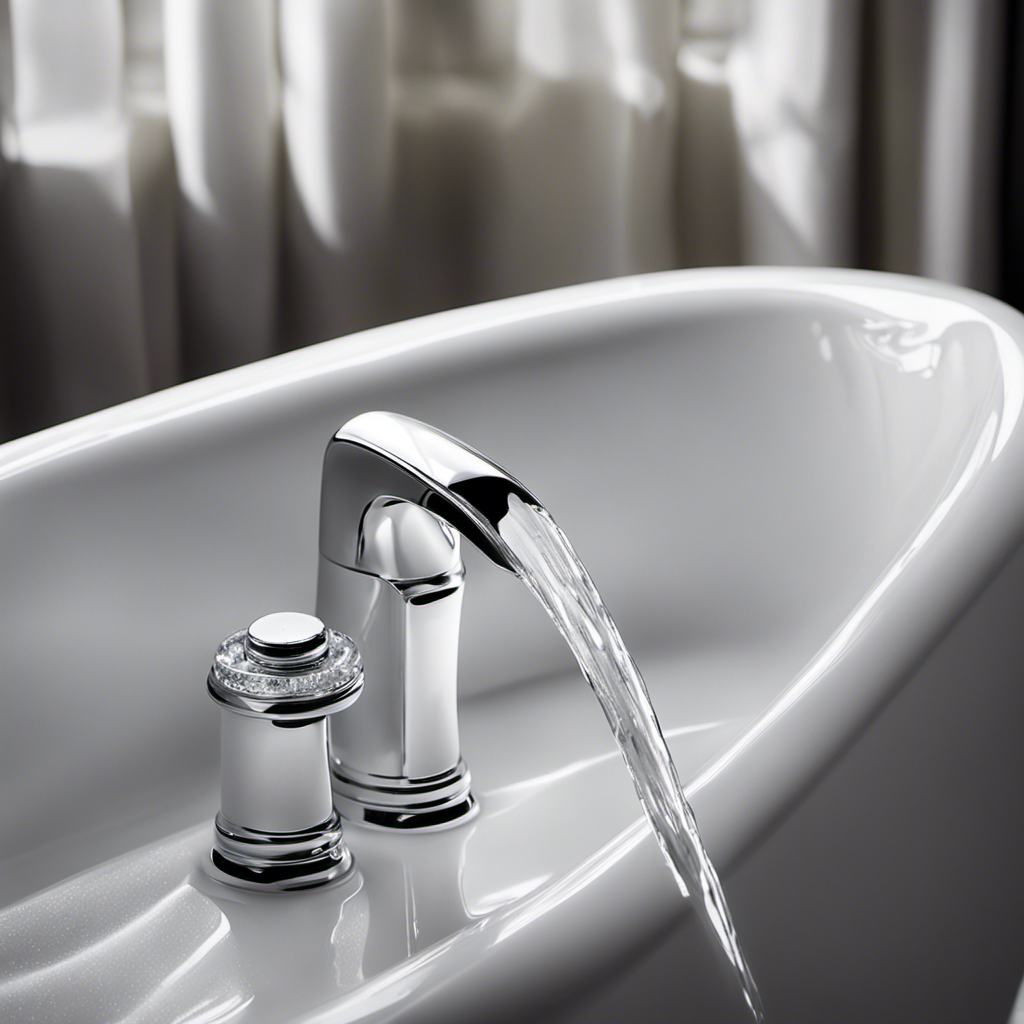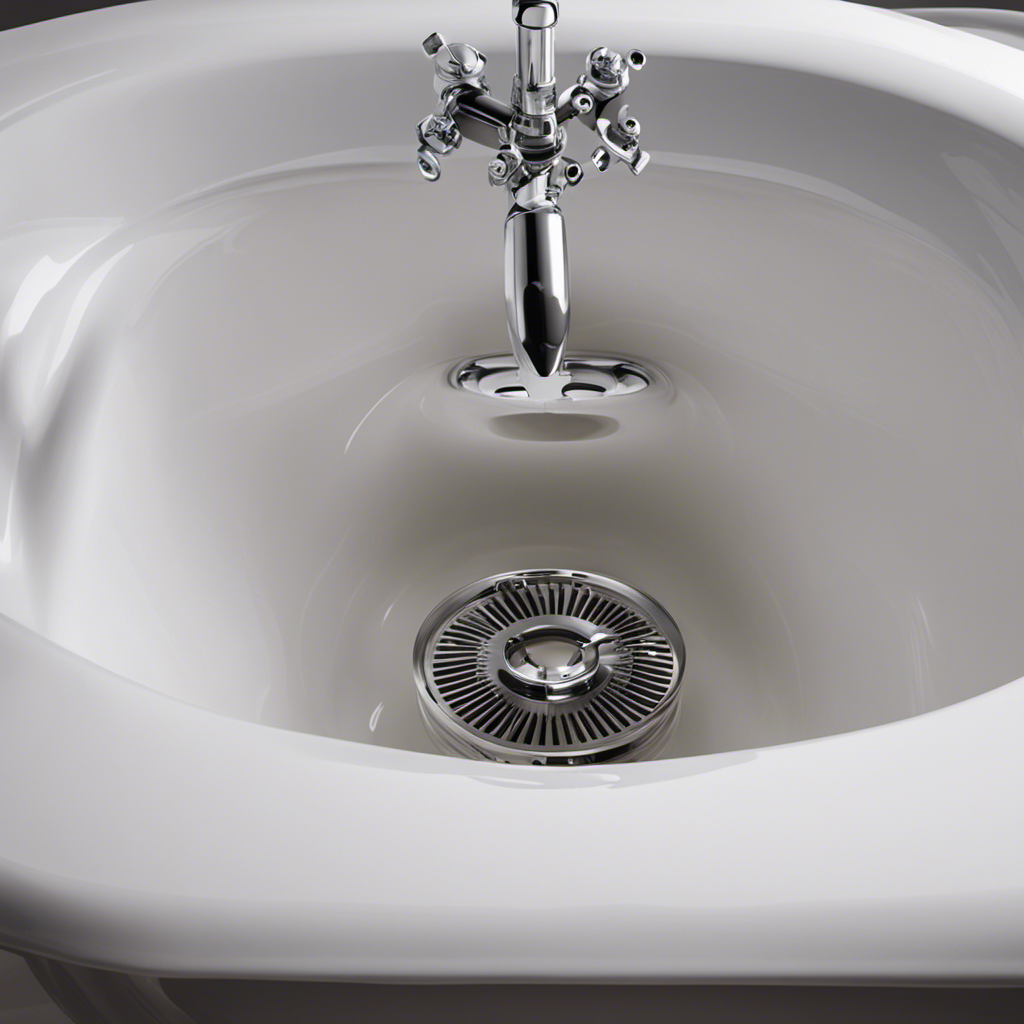I’ve got a bathroom renovation project that’ll blow your mind! In this article, I’ll show you how to replace a boring old bathtub with a sleek and modern shower. Trust me, it’s easier than you think.
We’ll start by assessing the feasibility of the replacement, then gather all the necessary tools and materials.
Next, we’ll dive right into removing that old tub and installing the shower base and drain.
Finally, we’ll add the finishing touches with some beautiful tiling and plumbing.
Let’s get started!
Key Takeaways
- Assess upfront expenses and long-term savings when considering bathtub replacement.
- Consult a professional for correct installation and safety compliance.
- Gather the necessary tools and materials before starting the project.
- Properly remove the existing bathtub and install the shower base and drain.
Assessing the Feasibility of Bathtub Replacement
Assessing the feasibility of bathtub replacement can help determine if installing a shower is a viable option. When evaluating the cost of replacing a bathtub with a shower, it is important to consider both the upfront expenses and the long-term savings.
The cost of materials, labor, and any necessary plumbing modifications should be taken into account. Additionally, consulting a professional is highly recommended to ensure that the installation is done correctly and meets all building codes and safety standards. They can provide valuable insights and advice based on their expertise.
Furthermore, they can assess the condition of your existing bathroom and help you determine if any additional work or repairs are needed. By evaluating the cost and consulting a professional, you can make an informed decision about whether or not replacing your bathtub with a shower is the right choice for you.
Gathering the Necessary Tools and Materials
To get started, you’ll need to gather all the tools and materials you’ll need for the project.
Measuring dimensions is crucial to ensure that the shower fixtures fit perfectly into the space left by the bathtub. You’ll need a tape measure to measure the length, width, and height of the area.
Additionally, consider the type of shower fixtures you want to install. Do you prefer a handheld showerhead or a fixed one? Are you interested in a rain showerhead or a standard one? Consider the water pressure in your home as well.
Once you’ve decided on the fixtures, make sure to choose ones that are compatible with your plumbing system.
Gather all these tools and materials before starting the project to ensure a smooth and efficient bathtub-to-shower conversion.
Removing the Existing Bathtub
Once you’ve gathered all the necessary tools and materials, it’s time to start removing the existing bathtub. The bathtub removal process can be a bit challenging, but with the right instructions, it can be done efficiently. Here is a step-by-step guide on how to remove your old bathtub:
| Step | Description |
|---|---|
| 1 | Turn off the water supply to the bathtub. |
| 2 | Remove the drain cover and disconnect the drain pipe. |
| 3 | Disconnect the water supply lines. |
After completing these steps, you can now proceed with removing the bathtub itself. Start by removing the caulking around the edges of the bathtub using a utility knife. Then, locate and remove the screws or nails that are holding the bathtub in place. Once all the fasteners are removed, you can carefully lift the bathtub out of its position. Remember to take caution and have a plan for disposing of the old bathtub, as it can be heavy and awkward to handle.
Installing the Shower Base and Drain
Now that you have removed the existing bathtub, it’s time to install the shower base and drain. When choosing the right shower base and drain for your bathroom design, it’s important to consider both functionality and aesthetics. Here are some key points to keep in mind:
-
Waterproofing Techniques for Shower Installations:
-
Apply a waterproof membrane to the walls and floor before installing the shower base to prevent any water damage.
-
Use waterproofing sealants around the edges of the shower base and drain to ensure a watertight seal.
-
Choosing the Right Shower Base and Drain for Your Bathroom Design:
-
Consider the size and shape of the shower base to fit your available space and design preferences.
-
Select a drain that matches the style of your bathroom and is compatible with the shower base.
With the shower base and drain properly installed, you are now ready to move on to the next step: finishing touches, including tiling and plumbing.
Finishing Touches: Tiling and Plumbing
After installing the shower base and drain, it’s time to focus on the finishing touches by tiling and plumbing the bathroom. Tiling not only adds aesthetic appeal to the space but also provides a waterproof barrier. Start by measuring the area and selecting the appropriate tiles. Lay them in a staggered pattern, using a thinset mortar for better adhesion. Once the tiles are in place, it’s time to grout. Mix the grout according to the manufacturer’s instructions and apply it using a grout float, making sure to fill in all the gaps. After the grout has dried, use a damp sponge to clean off any excess.
In terms of plumbing, it’s important to install the shower fixtures correctly for optimal performance. Begin by shutting off the water supply and removing the old fixtures. Install the new fixtures according to the manufacturer’s instructions, making sure to use plumber’s tape to prevent leaks. Connect the pipes and test for any leaks before sealing everything up. It’s always a good idea to consult a professional plumber if you’re unsure about any steps in the process.
Here’s a helpful table to summarize the steps involved in tiling and plumbing a shower:
| Tiling Steps | Plumbing Steps |
|---|---|
| Measure the area | Shut off the water supply |
| Select and lay tiles | Remove old fixtures |
| Apply mortar and set tiles | Install new fixtures |
| Mix and apply grout | Connect pipes |
| Clean off excess grout | Test for leaks |
Conclusion
In conclusion, replacing a bathtub with a shower is a challenging but rewarding project. By carefully assessing the feasibility, gathering the necessary tools and materials, and following the proper steps, you can transform your bathroom into a more functional and stylish space.
Remember, ‘out with the old, in with the new’ – this adage perfectly captures the excitement and anticipation of upgrading your bathroom. So don’t hesitate to embark on this journey and enjoy the benefits of a modern and efficient shower.










